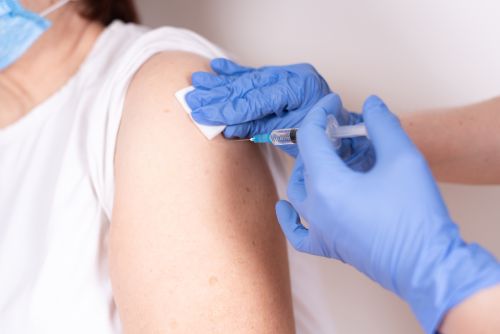Vaccine hesitancy is a critical barrier to achieving high COVID-19 vaccine coverage. The stability of hesitancy over time is unclear, as is the association between hesitancy and eventual vaccine receipt. Moreover, despite widespread use, the validity of self-reported COVID-19 vaccine receipt has not been established. Using a population-based, serosurvey cohort in the U.S., Siegler, et al. (2021) assessed the association between baseline vaccine hesitancy and vaccine receipt at study follow-up and explored the validity of vaccine self-report.
Participants were recruited from a national address-based frame. At baseline (August 9 to December 8, 2020) and follow-up (March 2 to April 21, 2021), surveys measured COVID-19 vaccine hesitancy, and biological specimens measured antibody response. Validation analysis compared anti-spike IgG with self-reported vaccination status. Vaccine self-report was assessed with the question, “Have you received a COVID-19 vaccine?” with responses of “Yes, one dose,” “Yes, two doses,” and “No.” Vaccine hesitancy was assessed with responses of “very unlikely,” “unlikely,” or “unsure” categorized as hesitant and “likely” or “very likely” categorized as willing. Sociodemographic variables, including race and ethnicity, were self-reported and were collected as part of the cohort study.
Of 4654 baseline respondents (2727 women [59%]; mean [SD] age, 50.7 [17.2] years), a total of 3439 (74%) completed follow-up. Alluvial plots show the path of persons from baseline hesitancy status to follow-up vaccination status, with the widths corresponding to proportions observed (Figure). Among persons hesitant to vaccinate at baseline, at follow-up, 32% (95% CI, 27%-37%) reported receiving 1 or more vaccine doses, 37% (95% CI, 32%-42%) reported being likely to be vaccinated, and 32% (95% CI, 27%-37%) remained unlikely to be vaccinated. In contrast, among persons likely to be vaccinated at follow-up, 54% (95% CI, 50%-57%) had received 1 or more vaccine doses, 39% (95% CI, 36%-43%) remained likely to be vaccinated, and 7% (95% CI, 5%-9%) reported being unlikely to be vaccinated. Baseline vaccine willingness was higher among persons with a bachelor’s or graduate degree than among persons with lower education (76% [95% CI, 72%-78%] vs 65% [95% CI, 61%-69%]), and at follow-up these differences were reflected in vaccination, with vaccination rates of 54% (95% CI, 51%-58%) vs 43% (95% CI, 39%-47%). For Hispanic individuals, baseline vaccine willingness was similar to that of non-Hispanic White individuals (71% [95% CI, 64%-78%] vs 69% [95% CI, 66%-72%]), yet at follow-up fewer Hispanic individuals than non-Hispanic White individuals were vaccinated (31% [95% CI, 25%-38%] vs 51% [95% CI, 47%-54%]). Because not all participants were eligible for vaccines at follow-up, we conducted a sensitivity analysis restricted to participants reporting vaccine eligibility and found that among persons hesitant to vaccinate at baseline, at follow-up 51% reported receiving 1 or more vaccine dose, 22% reported being likely to be vaccinated, and 27% remained unlikely to be vaccinated.
Self-reported vaccine receipt indicated substantial validity compared with the reference standard detection of anti-spike IgG among 1949 participants (excluding 378 with natural infection and 868 without full dosing or with unknown vaccine manufacturer). Self-report had 98.2% (638 of 650 respondents) positive predictive value, 97.3% (35 of 1299 respondents) negative predictive value, 94.8% (638 of 673 respondents) sensitivity, and 99.1% (12 of 1276 respondents) specificity.
Reference: Siegler AJ, et al. Trajectory of COVID-19 Vaccine Hesitancy Over Time and Association of Initial Vaccine Hesitancy With Subsequent Vaccination. JAMA Netw Open. 2021;4(9):e2126882. doi:10.1001/jamanetworkopen.2021.26882
